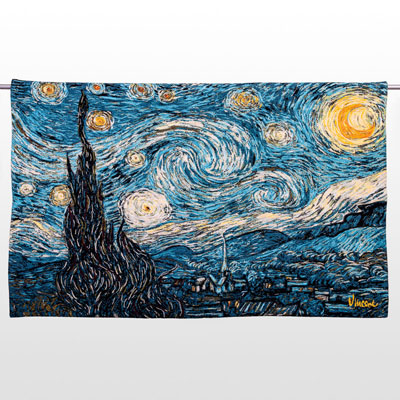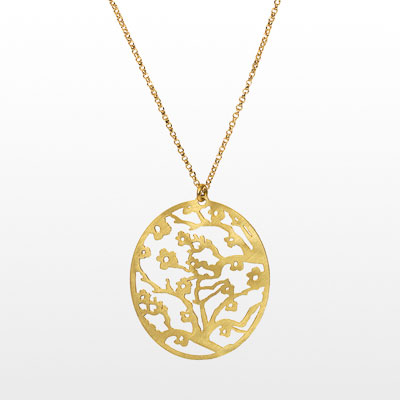Tel : (+33) 4 94 63 18 08
9am - 6pm from Monday to Sunday
All products Vincent Van Gogh • Products of the topic Flowers
Van Gogh Pendant : Almond tree in flower
REF : BI-VGOGH-02
In stock
Only 1 in stock
Unavailable
35,00 €
Pendant after Vincent Van Gogh : "Almond tree in flower", a work of 1890.
An artistic and cultural gift idea which will delight the lovers of the impressionist artist Vincent Van Gogh.
This jewel is delivered in its beautiful purse to the colors of Le Cadeau Artistique: red satin, black velvet and golden logo.
* * * * *
Almond Blossoms (1890)
The iconic work of Vincent van Gogh, titled "Almond Blossoms," created in 1890, emerges like a floral symphony, capturing the very essence of spring in a burst of colors and ethereal forms. Beyond its botanical representation, this piece carries a symbolic dimension. The almond blossoms symbolize hope, rebirth, and purity. Van Gogh created this work with deep personal significance, dedicating it to his nephew Vincent Willem, the son of his brother Theo, thus offering a poignant homage to life and birth. Furthermore, the influence of Japan on this work by Vincent van Gogh is undeniable and reveals the profound impact that Japanese art had on the post-impressionist master. In this painting, the subtle presence of Japanese aesthetics manifests through various elements. The pastel tones of the flower petals and the delicate interplay between whites and pinks evoke the delicacy of classic Japanese prints, where nature is portrayed with visual poetry and meticulous precision. Additionally, Van Gogh draws inspiration from the simplification of lines and the accentuation of contours often found in Japanese graphic art. The interlaced branches of the almond trees and the shape of the flowers testify to this influence, adopting a simplified elegance and suggestive geometry. But perhaps the most notable element in terms of Japanese influence in "Almond Blossoms" is the asymmetrical composition of the canvas. Van Gogh embraces the principle of ukiyo-e, which involves decentering the main subject to create a dynamic balance. The almond trees occupy a significant portion of the space on the left side of the canvas, leaving the right side more open, imparting a fluid harmony to the composition.
Post-impressionism
The post-impressionist period in painting (between the end of the 1880s and 1910s) followed the impressionist movement, which took place between the 1860s and 1890s. The post-impressionists took some of the techniques of impressionism, such as painting outdoors and using vibrant colors, but they also sought to go beyond impressionism by exploring new themes and using more structured forms. Among the most well-known post-impressionist artists are Paul Cézanne (1839-1906), Vincent van Gogh (1853-1890), Georges Seurat (1859-1891), and Henri de Toulouse-Lautrec (1864-1901). Paul Cézanne is known for influencing many subsequent artistic movements, including cubism. His paintings emphasize structure and form rather than color and light, as was the case with impressionism. Vincent van Gogh is best known for his vibrant and expressive paintings, which reflect his difficult life and unstable mental state. His paintings are filled with bright colors and sinuous lines, and they had a significant impact on modern painting. Georges Seurat developed a technique called "pointillism," which involves painting with small dots of color rather than brushstrokes. His paintings are characterized by precise use of color and light, and they also influenced cubism. Henri de Toulouse-Lautrec was known for his paintings and advertising posters that featured the nightlife and cabarets of Montmartre in Paris. His works are characterized by their simple and direct style, and they contributed to the popularity of post-impressionist art among the general public. The post-impressionist period also saw the emergence of many other talented artists, such as Paul Gauguin (1848-1903), André Derain (1880-1954), and Raoul Dufy (1877-1953). Although these artists all had unique styles, they were all influenced by impressionism and contributed to the evolution of painting art during this period.
Discover the artist
Van Gogh Vincent
Vincent Van Gogh : Artistic products of the famous impressionist artist of the end of the 19th century ( 1834-1917 ). We propose a large choice of articles as umbrellas and silk scarves Made in France, art jewelry or artistic puzzles.




















